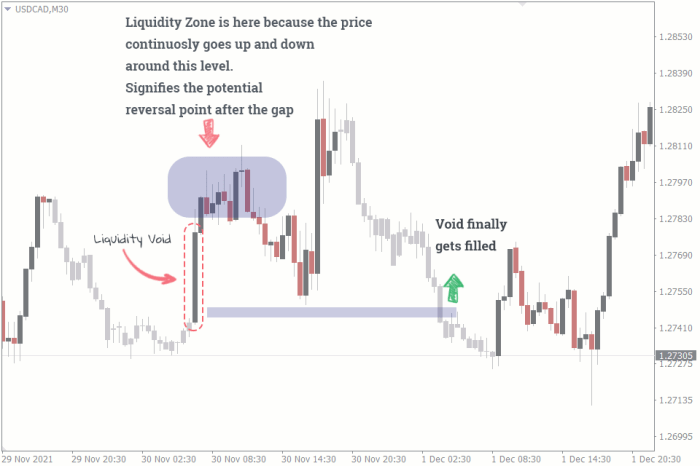In the realm of Forex trading, liquidity and spreads are fundamental concepts that shape every trader’s experience. Understanding their intricacies is paramount for maximizing profitability and minimizing risks. This comprehensive guide delves into the depths of Forex liquidity and spreads, empowering traders with the knowledge to navigate the dynamic market landscape.
Forex liquidity and spreads are key factors to consider when trading. Understanding how they affect your trades can help you make more informed decisions.
If you’re new to Forex trading, Forex trading signals can provide valuable insights into market movements and help you identify potential trading opportunities.
By utilizing these signals, you can improve your understanding of Forex liquidity and spreads, allowing you to optimize your trading strategies and maximize your profits.
Liquidity, the lifeblood of Forex trading, refers to the ease with which currencies can be bought and sold. Spreads, on the other hand, represent the difference between the bid and ask prices, directly impacting trading costs.
By mastering these concepts, traders can optimize their strategies and make informed decisions.
Forex Liquidity

Forex liquidity refers to the ease with which a currency can be bought or sold in the foreign exchange market. It is an important factor in Forex trading as it affects the speed and cost of executing trades.
Several factors influence Forex liquidity, including the currency pair being traded, the time of day, and market conditions.
Currency pairs with higher trading volumes, such as EUR/USD and USD/JPY, tend to have higher liquidity, while less popular pairs may have lower liquidity.
Factors Affecting Forex Liquidity
- Currency pair being traded
- Time of day
- Market conditions
Examples of Currency Pairs with High and Low Liquidity
- High liquidity: EUR/USD, USD/JPY
- Low liquidity: USD/TRY, EUR/HUF
Forex Spreads
A spread in Forex trading refers to the difference between the bid and ask prices of a currency pair. It represents the cost of executing a trade and is typically quoted in pips (percentage in points).
Spreads are calculated by subtracting the bid price from the ask price. The bid price is the price at which a trader can sell a currency pair, while the ask price is the price at which they can buy it.
Types of Spreads
- Fixed spreads
- Variable spreads
- Raw spreads
Impact of Liquidity and Spreads on Trading: Forex Liquidity And Spreads
Liquidity and spreads have a significant impact on Forex trading. High liquidity allows for faster execution of trades and tighter spreads, while low liquidity can lead to delays and wider spreads.
Spreads impact trading costs and profitability. Wider spreads increase the cost of executing trades and reduce potential profits, while tighter spreads lower costs and increase profitability.
Understanding Forex liquidity and spreads is crucial for successful trading. To delve deeper into the nuances of Forex trading, consider exploring ” How to trade Forex using MetaTrader 4.” This comprehensive guide provides insights into the platform’s features and strategies for maximizing profits while managing risks.
By understanding both liquidity and spreads, traders can make informed decisions that enhance their trading outcomes.
Strategies for Managing Liquidity and Spreads
- Trade during high liquidity periods
- Choose currency pairs with high liquidity
- Negotiate with liquidity providers for tighter spreads
Liquidity and Spread Providers
Liquidity and spread providers are entities that provide liquidity to the Forex market and offer spreads to traders. They can be banks, brokerages, or other financial institutions.
Forex liquidity and spreads are important factors to consider when choosing a broker. Liquidity refers to the amount of currency available for trading, while spreads refer to the difference between the bid and ask prices.
A broker with high liquidity and tight spreads will offer better trading conditions and reduce the risk of slippage.
If you’re new to Forex trading, it’s recommended to practice on a demo account before risking real money. Forex demo accounts allow you to trade with virtual currency, so you can learn about the market and develop your trading strategies without any financial risk.
Once you’re comfortable with demo trading, you can open a live account and start trading with real money. By understanding Forex liquidity and spreads and using a demo account to practice, you can increase your chances of success in the Forex market.
Different providers offer varying levels of liquidity and spreads. Traders should compare and choose providers based on their trading needs and preferences.
Advantages and Disadvantages of Different Providers

| Provider Type | Advantages | Disadvantages |
|---|---|---|
| Banks | High liquidity, tight spreads | High minimum deposit requirements |
| Brokerages | Lower minimum deposit requirements, variety of account types | May have wider spreads |
| ECNs | True market spreads, no dealing desk intervention | May have higher minimum deposit requirements |
Market Depth and Liquidity
Market depth refers to the number of orders available at different price levels in the Forex market. It provides an indication of the liquidity of a currency pair.
High market depth indicates that there are many orders available at different price levels, making it easier to execute trades quickly and at desired prices.
How Market Depth Can Be Used to Assess Liquidity Conditions
- Look for currency pairs with high order volumes at different price levels
- Avoid currency pairs with low order volumes or large gaps between price levels
Technology and Liquidity
Technology has played a significant role in improving Forex liquidity. Electronic trading platforms have increased market depth and liquidity by connecting traders from around the world.
Artificial intelligence and machine learning are also being used to enhance liquidity by optimizing order matching and reducing latency.
Impact of Artificial Intelligence and Machine Learning on Forex Liquidity, Forex liquidity and spreads
- Faster order matching
- Reduced latency
- Improved market depth
Final Thoughts
In conclusion, Forex liquidity and spreads are intertwined factors that significantly influence trading outcomes. By understanding their dynamics and employing effective strategies, traders can harness market opportunities and mitigate potential risks.
Whether you’re a seasoned professional or a novice venturing into the Forex arena, this guide has equipped you with the essential knowledge to navigate the complexities of this ever-evolving market.
Popular Questions
What factors influence Forex liquidity?
Economic stability, political events, market sentiment, and trading volume are key factors that impact Forex liquidity.
How are Forex spreads calculated?
Spreads are typically quoted in pips, which represent the smallest price increment for a currency pair. They are calculated as the difference between the bid and ask prices.
What is the impact of liquidity on trade execution?
High liquidity ensures faster trade execution and tighter spreads, while low liquidity can lead to delays and wider spreads.




